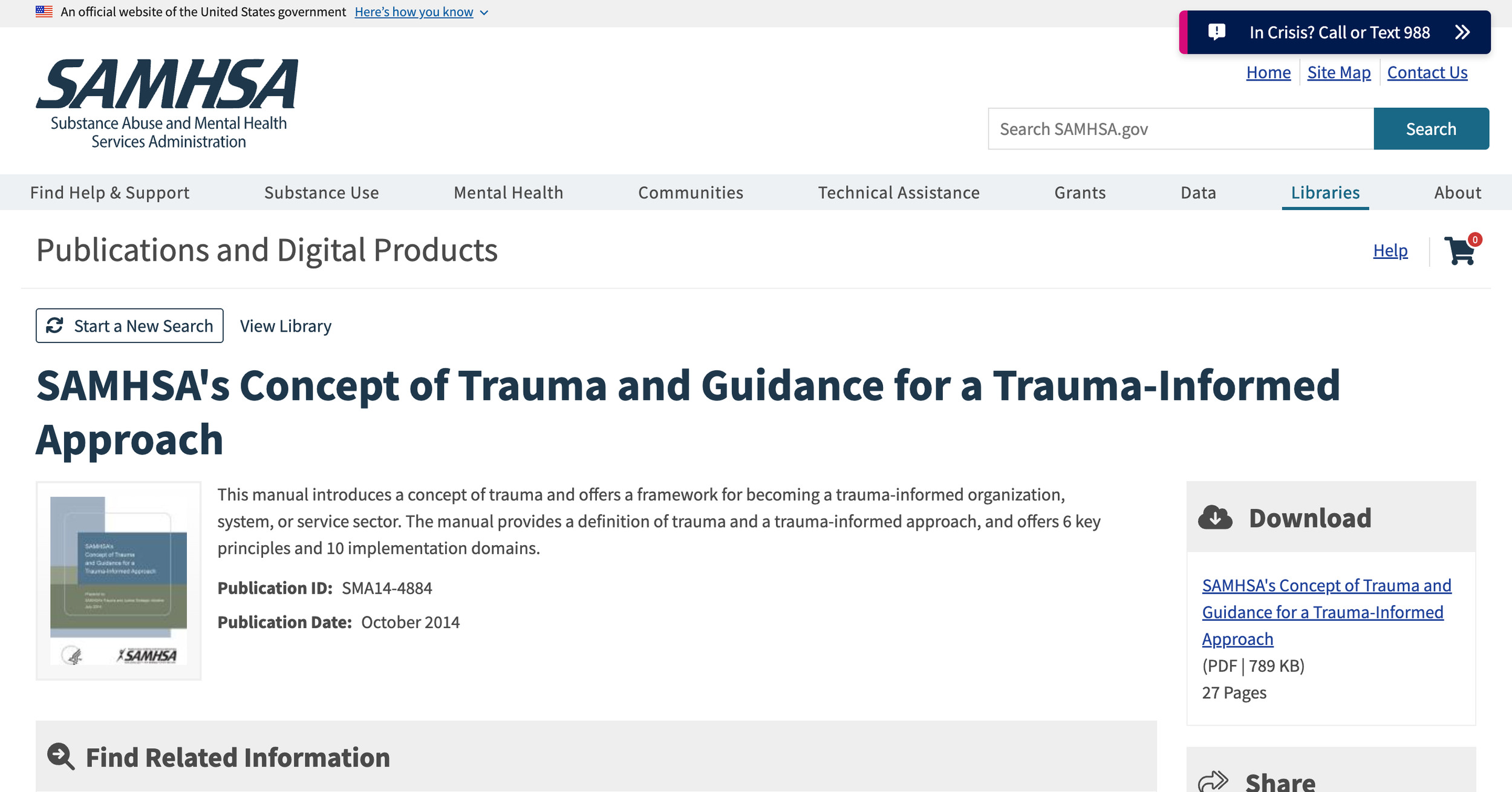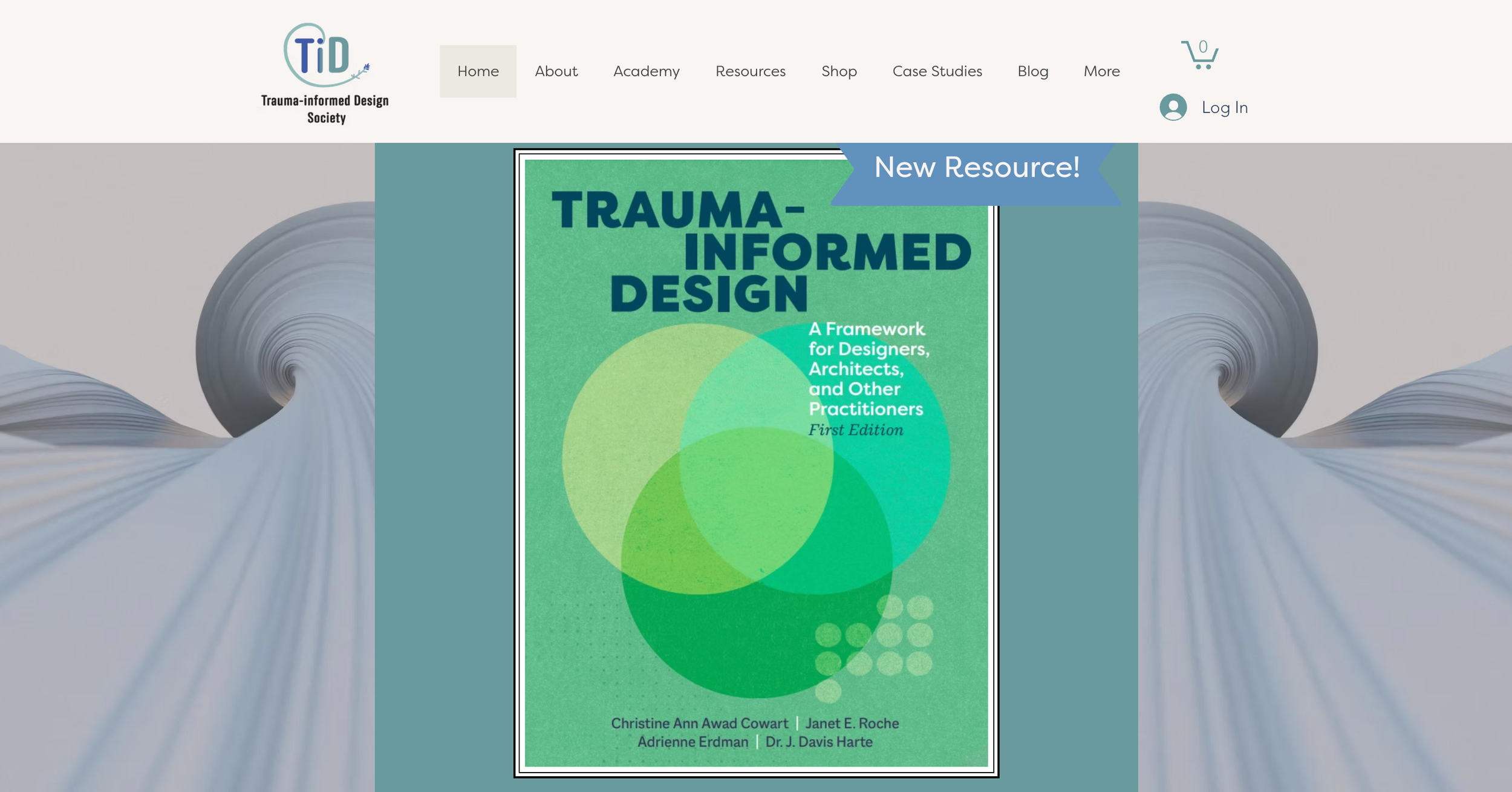6 Trauma Informed Principles for Content Design
70% of people worldwide have experienced trauma. Yet somehow, trauma-informed principles for content design remain the industry's best-kept secret. Well, not anymore.
I'm about to show you how six research-backed trauma-informed content design principles can transform your digital experiences from potentially harmful to genuinely healing.
What trauma-informed content design actually means
Trauma-informed design isn't about wrapping your content in cotton wool or assuming your users are fragile. It's about recognising that trauma fundamentally changes how people process information, make decisions, and navigate digital spaces.
When someone's experienced trauma, their brain literally rewires itself. The cognitive and emotional shifts caused by PTSD influence how users absorb content and interact with designs. That perfectly logical user journey you've mapped out? It might feel like navigating a minefield to someone whose nervous system is stuck in survival mode.
The Substance Abuse and Mental Health Services Administration (SAMHSA) developed six core principles of trauma-informed care in 2014. They're foundational approaches that the architecture, healthcare, and now digital design industries have adapted to create genuinely inclusive experiences.
Unlike face-to-face interactions where you can adjust your approach in real-time, content is essentially one-way communication. Once you publish, there's no taking back that aggressive error message or softening that demanding call-to-action.
So how do we bridge this gap? By building trauma-informed principles directly into our content from the start.
The six SAMHSA principles that'll revolutionise your content strategy
1. Safety: Creating predictable, secure digital environments
Safety isn't just about SSL certificates and privacy policies (though those matter too). It's about creating content that doesn't trigger fight-or-flight responses.
Your content creates safety when it:
Uses consistent navigation and predictable interactions
Provides clear, non-threatening error messages
Avoids unexpected pop-ups or sudden content changes
Includes safe exit options for sensitive content
👀Instead of ❌"ERROR: Invalid input" try ✅"We need a bit more information to help you. Please check your email format."
The 1800RESPECT website redesign by Tigerspike Agency demonstrates this beautifully. They implemented safe exit functionality, extended interview times during user testing, and measured success through reduced bounce rates on critical pages.
2. Trustworthiness and transparency: Building reliable digital relationships
Trust in digital spaces comes from honest, transparent communication that never overpromises or manipulates.
Trustworthy content:
Explains processes clearly before users commit
Provides realistic timelines and expectations
Uses plain language without jargon or manipulation
Shares information about data use transparently
Content design tip: Replace ❌"Act now—limited time offer!" with ✅"This offer is available until [specific date]. Here's exactly what you'll get..."
Research from Cornell University shows that transparency in digital design benefits all users, not just trauma survivors. It's universal good practice that happens to be essential for trauma-informed approaches.
3. Peer support: Integrating shared experiences authentically
Peer support in content means showing users they're not alone through authentic testimonials, community features, and shared experiences.
Effective peer support content:
Features genuine user testimonials (with permission)
Creates opportunities for community connection
Shares stories of resilience without exploitation
Provides multiple pathways for support
4. Collaboration and mutuality: Sharing power through content choices
Traditional UX often assumes we know what users need. Trauma-informed content design shares power by offering genuine choices about how users engage with content.
Collaborative content design offers:
Multiple ways to access the same information
User control over content consumption pace
Options to customise interface elements
Feedback mechanisms that actually influence changes
Example: Provide content in multiple formats – video with captions, audio versions, downloadable PDFs, and interactive tools. Let users choose their preferred learning style.
The UK Government's trauma-informed design approach includes user feedback systems that directly influence service improvements. They don't just ask for feedback – they act on it visibly.
5. Empowerment and choice: Designing for user agency
Empowerment means giving users genuine control over their experience rather than forcing them down predetermined paths.
Empowering content design:
Provides multiple task completion methods
Includes clear undo and save options
Offers customisable privacy settings
Explains why information is needed
🧠 When users feel they have choices, their stress levels decrease and cognitive function improves. This isn't just good for trauma survivors – it improves conversions for everyone.
Research from the University at Buffalo shows that choice and control are fundamental to psychological healing. In content design, this might mean offering users control over autoplay videos, notification frequency, or even colour contrast options.
6. Cultural responsiveness: Moving beyond stereotypes in content
Cultural responsiveness requires understanding how trauma manifests differently across communities and ensuring your content doesn't perpetuate harmful stereotypes.
Culturally responsive content:
Uses inclusive language that doesn't assume experiences
Represents diverse backgrounds authentically
Considers different cultural approaches to healing
Avoids one-size-fits-all solutions
What feels safe and empowering to one cultural group might feel threatening to another. Content that works for white, middle-class users might completely miss the mark for other communities.
The Trauma-Informed Design Society emphasises that cultural responsiveness isn't just about translation – it's about fundamentally different worldviews.
The overlap between trauma-informed design and accessibility
Here's something fascinating: trauma-informed content design principles strongly align with WCAG accessibility guidelines.
Predictable interfaces (WCAG 3.2.1-3.2.4) support trauma-informed safety. Clear headings and logical reading order build trust through transparent information architecture. User control principles provide the agency essential for trauma survivors.
But there's a crucial difference. Accessibility focuses on removing barriers. Trauma-informed design focuses on not creating harm in the first place.
Consider this: someone experiencing PTSD might have acquired cognitive differences that affect executive functioning, memory, and attention. Traditional accessibility addresses the symptoms – trauma-informed design addresses the underlying experience.
Common digital trauma triggers your content might be causing (and how to fix them)
High-risk triggers:
Sudden changes: Unexpected updates, crashes, interface modifications
Loss of control: Forced processes, auto-playing content, aggressive pop-ups
Privacy violations: Unclear data use, unexpected content sharing
Aggressive language: Demanding tones, artificial urgency, shame-based messaging
Overwhelming stimuli: Flashing lights, loud autoplay, stark contrasts
Specific fixes:
For sudden changes: Implement predictable updates with clear communication
For control issues: Provide multiple pathways and clear exit routes
For privacy concerns: Write transparent privacy policies in plain English
For aggressive language: Use supportive rather than demanding communication
For overwhelming stimuli: Give users control over audio/visual elements
Testing your content for trauma sensitivity (because you can't fix what you don't measure)
Traditional usability testing asks "Can users complete the task?" Trauma-informed testing asks "How do users feel during and after the task?"
Testing approach differences:
Traditional: Task completion rates, time on task, error frequency
Trauma-informed: Stress indicators, user comfort levels, emotional impact assessment
Practical testing methods:
Include trauma survivors in your user research (with appropriate safeguards)
Use stress testing protocols that monitor emotional responses
Implement post-interaction wellbeing checks
Test under high-stress conditions, not just optimal environments
Research consideration: When conducting research with trauma survivors, let users choose seating arrangements, allow stopping at any time, and extend interview times to ensure users feel heard¹⁴.
The key insight? Traditional UX research focuses on efficiency. Trauma-informed research prioritises psychological safety.
The future is trauma-informed, and it starts with your next blog post
Every piece of content you create is an opportunity to either harm or heal. To either retraumatise or restore. To either exclude or include.
The brands that understand this – that recognise trauma-informed principles for content design as essential, not optional – will be the ones that build unshakeable trust and loyalty.
Because here's what I've learned after years of curating blogs: the best content doesn't just communicate. It cares.
Ready to transform your content from potentially harmful to genuinely healing? I specialise in developing trauma-informed brand voices and content strategies that connect, convert, and create lasting relationships with your audience. Because words should build bridges, not barriers.



